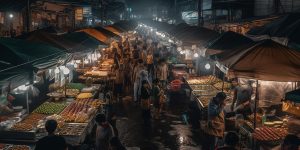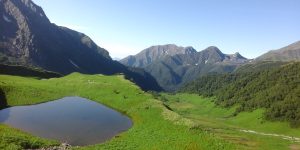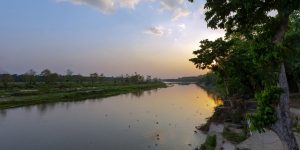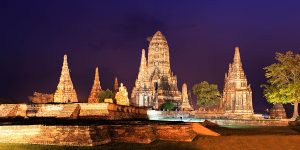My interest in geography began when I was three, when my mother showedme a red dot on a map of an airline inflight magazine, and said “this is where your grandmother is.”
We had just moved from Switzerland, where my mother is from, to Nepal, where my father is from, and I was missing my maternal grandmother terribly. Maps and airplanes, I learned, could connect me to far away people and places, and I grew up falling asleep looking at maps and pictures of planes on the wall above my bed.
My interest in science started much later. By the time I was completing high school I had developed a deep concern about pollution and landscape deterioration. On a trek to Annapurna Base Camp, I remember looking at the 360-degree mountain panorama, wishing that I could remain there forever. But then I realized that if I did not go back down and do something the pollution would just end up following me to where I was.
By the time I arrived on campus at Harvard I had so thoroughly memorized the campus map that it did not feel like I was there for the first time, and I became the instant tour guide for many of my friends. In my second week, in a class about the atmosphere that I initially just took to fulfill a science requirement, I found a small error in the photocopied book manuscript that Mike McElroy, a senior professor had handed out. I hesitantly went to point it out to him because, after all, he was spending weekends tutoring Al Gore about climate science. His reaction was to take me on as his advisee, and later on to also hire me to help prepare the book for publication.
In my third year I met the woman I would end up marrying. Actually I was trying to call her roommate, but she picked up the phone and we talked for an hour. We met the next morning, and have been together ever since.
After the atmospheric science class in my first semester in college I explored a broad range of other interests, from philosophy to geology to ecotourism, as was possible in my Environmental Science and Public Policy program. I wrote an undergraduate thesis about transportation planning options for Kathmandu Valley. I graduated from college thinking that everything was important, and that I had to continue studying everything. So I enrolled in a similarly broad Master’s degree, where I soon realized the importance of specializing. I considered environmental policy and urban planning, before deciding that I would pursue a quantitative subject whose literature was not written in simple prose that I could read up any time. I brushed up on physics and chemistry, and joined the atmospheric science doctoral program at MIT. Within atmospheric science, I decided early on that I would do both field measurements (in Nepal) and computer simulations.
In my PhD research back in 2004-2005 I made my first attempt to understand when and how air pollution accumulates in and ventilates out of the Kathmandu Valley. I found huge differences in air quality impacts depending on the time and place of pollutants emissions: what time rush hour takes place, and where brick kilns are located. However, I did not have enough data and modeling results to make confident policy recommendations.
In the Spring of 2013 I had the good fortune of collaborating with my friend Maheswar Rupakheti at the Institute for Advanced Sustainability Studies in Potsdam in Germany to organize a major air pollution field measurement campaign around Kathmandu Valley involving more than a dozen research groups from around the world. We now have more detailed data than exists for any other city in South Asia, and are eagerly trying to figure out what it means. We hope to be able to start making clear science-based recommendations about the most effective ways to improve air quality in Kathmandu Valley.
Since I joined the University of Virginia in 2009, my students and I have been working on improving scientific understanding of when and how air pollutants are transported into Nepal from south of the border, how they move around within Nepal and across the Himalaya, and what kind of impacts they have. Since joining ICIMOD in March 2012, and leading the establishment of its Atmosphere Initiative, I have additional opportunities to further science research, as well as to get involved directly in evaluating mitigation options and contributing to policy development.
The Himalaya, the poles, and small island nations are most vulnerable to climate change. We know that temperatures have been increasing fastest at high altitudes and high latitudes. Glaciers in Nepal are retreating, affecting dry season water availability in our rivers. Rainfall patterns are changing. A big fraction of the change is due to the global increase in greenhouse gases, something we have little control over excepting making a big fuss at international fora.
However, there is also a big contribution to climate change in the Himalaya from short-lived climate pollutants (SLCP) including black carbon: the dark soot particles that are emitted by diesel engines, brick kilns, and cooking fires, and forest fires within Nepal and its neighbors. Reducing SLCPs has direct benefits for air quality and health, can be done quickly, and has immediate impacts.
The threat to the Himalaya is bad, but some of it is in our hands. It is true that Nepal only contributes a tiny fraction of the carbon dioxide that ends up in the atmosphere, and reducing Nepal’s emissions will not have a direct effect on global climate unless it is able to set an example for other nations to follow. However, Nepal also emits short-lived climate pollutants such as black carbon. Because these stay in the atmosphere for a short time, their biggest impact is close to their sources. The black carbon that is contributing to melting Himalayan glaciers is not from North America or Europe but from Nepal and India. The black carbon that creates the tuwalo haze that blocks our mountain views is local and regional. We do have control over what is emitted within Nepal. The Alternative Energy Promotion Center (AEPC) in Kathmandu is making a big push to clean up indoor air pollution in Nepal by distributing improved cookstoves. If we can make sure that the cookstoves that are distributed are ones that emit less black carbon we can make a big difference. If we can substitute current brick kilns with cleaner ones, and make sure our diesel vehicles are well maintained we can reduce black carbon emissions within Nepal significantly, and thereby address not just air quality but also some of the climate change we are facing.
The challenge for scientists comes from a tension between their training to be ultra-aware of the uncertainties and potential flaws in scientific knowledge, and the need for the public and policy makers to have immediate solutions. Science is driven by focusing on the questions, the unknowns, the uncertainties. What I try to do is to step back and ask myself “What do we know already? What do we know with sufficient confidence to make recommendations, and which uncertainties form real bottlenecks to effective action?” I try to focus my science work on overcoming those crucial uncertainties.
My work involves a lot of travel. In 2012, I passed through Kathmandu airport immigration 21 times. During my travels I am almost universally treated well as a citizen of the world where my citizenship does not matter. It was only twice that I felt discrimination. The first time was while applying for a visa at the Taiwanese consulate in New York. I was told that citizens of Nigeria and Nepal needed additional clearance “because of passport fraud in your countries”. The second time was at Delhi airport, connecting to Lufthansa to the US, where I had to wait an additional two hours for my connecting boarding pass “because for Nepali passports we have to follow additional procedures”.
The place where I have had the most positive experience has been Rwanda: Since early 2010 I have been advising its government on a climate observatory project on a mountain peak where a cable car will be built. Early on, I recognized the similarities between Rwanda today and the Nepal I grew up in, and the potential for lessons from Nepal that may be relevant to Rwanda. It was conversations about such topics that initiated Sujeev’s and beed’s involvement in Rwanda.







